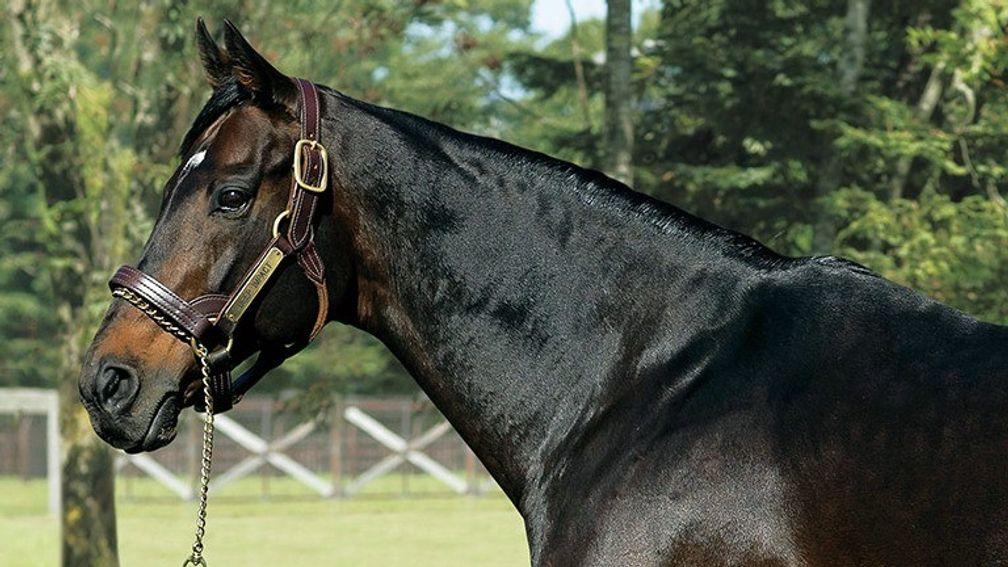IRT bosses look to the future as charters between Hokkaido and Australia resume
Route was cut off more than a decade ago following equine influenza outbreak

Relations between the Japanese and Australian breeding industries have taken a significant step towards recovering from the impact of the 2007 equine influenza (EI) outbreak after International Racehorse Transport (IRT) chartered the first flights between Hokkaido and Sydney for more than a decade last week.
Breeding stock had been unable to travel between Hokkaido, Japan's nothernmost island and home to the likes of Northern Farm and Shadai Stallion Station, since the EI outbreak in Australia almost 11 years ago, which followed the arrival in the country of four horses from Japan, where an outbreak had also occurred.
While relations had begun to improve in recent years, with Japanese horses once again competing in Melbourne's spring carnival and stallions such as Maurice shuttling to Australia, only a quarantine centre in Tokyo had been approved for export by the Australian government.
This meant horses travelling to and from Hokkaido faced a trip of more than 1,100km by road and ferry from the Japanese capital before the route was finally reopened last week.
"This is a huge result," said IRT's managing director in Australia, Chris Burke. "Obviously, with the humidity you get in Tokyo at this time of year, travelling so far with breeding stock of the value of some of these stallions was not a good solution."
The direct flights have reduced travel time to approximately ten hours and came after IRT worked with both the Japanese Ministry for Agriculture and Australian authorities in order to get the green light for a quarantine centre on Hokkaido, which came in June.
The first such charter subsequently left Sydney for Hokkaido last Friday with mares due to be covered to southern hemisphere time by leading stallions such as Deep Impact, and returned two hours later with cargo including shuttle stallions bound for Australia.
"It was a very difficult time [following the EI outbreak] because there had been a great deal of initiative shown by farms like Arrowfield with the concept of bringing in those Japanese stallions and reverse shuttle to Sunday Silence," said Burke.
"It was a growing market that got cut off at the knees instantly and it's taken some time to get that going again.
"This is the culmination of ten years of hard work whereby not only is the trade active again but we're even finding better ways to go about it and creating better relationships between the breeding industries."
Burke said he has already seen the impact of the reopening of the route, with Australians seeking out racing talent in Japan to bring back on the first charter.
"The interesting thing was that when people heard the charter was on, some Australians took the opportunity to purchase colts in Japan that could be stallion types here in Australia to come down and race," Burke explained.
"There's been a lot of staying horses bought from Europe and that market has been hit quite hard by the Australians, so now they're looking for another outlet. If you've got a five- or six-year-old stayer who has been very good at Group level in Japan, it's not a bad option to be able to move it on to Australia, where it could perhaps get another big win and stand at stud down here.
"What we're seeing is a major internationalisation of the bloodlines. The quality of mares going to Japan from around the world is extraordinary and now here we are with the opportunity to buy back out of those bloodlines and export them to Australia and other locations."
Burke is hopeful IRT will run a flight to bring the mares delivered to Japan last week back to Australia in the coming weeks, with the possibility of another in January to take shuttle stallions back to their Japanese bases if there are enough horses to make the trip financially viable.
For complete coverage of racing and bloodstock in Australia and New Zealand, download ANZ Bloodstock News every day
Published on 2 August 2018inNews
Last updated 17:50, 2 August 2018
- Well-related winners and placed performers feature at the Tattersalls Cheltenham April Sale
- ‘It’s been constant pressure for the last six months’ - up-and-coming consignors out to make dreams come true at the Doncaster Breeze-Up Sale
- Three new board members for the National Stud
- Hide The Evidence a first winner for Sands Of Mali with victory at Bordeaux Le Bouscat
- Showcasing filly from a deep Moyglare family set for Gowran Park debut on Tuesday
- Well-related winners and placed performers feature at the Tattersalls Cheltenham April Sale
- ‘It’s been constant pressure for the last six months’ - up-and-coming consignors out to make dreams come true at the Doncaster Breeze-Up Sale
- Three new board members for the National Stud
- Hide The Evidence a first winner for Sands Of Mali with victory at Bordeaux Le Bouscat
- Showcasing filly from a deep Moyglare family set for Gowran Park debut on Tuesday